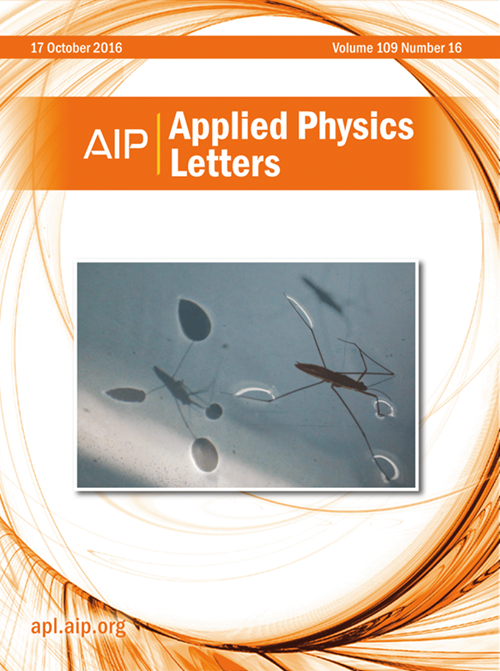具有超薄原生氧化物的Pt/Co双分子层中的大交换偏置场
IF 3.5
2区 物理与天体物理
Q2 PHYSICS, APPLIED
引用次数: 0
摘要
我们研究了厚度在0.7 ~ 1.4 nm之间的超薄钴层作为楔形沉积的Pt/Co双层样品的磁性能。暴露在空气中后,顶部0.5 nm的Co氧化,形成0.9 nm厚的CoO表面层。残余的金属钴在室温下仍然具有铁磁性,具有很强的垂直磁各向异性,甚至可以达到≈0.2-0.3 nm的厚度。这些特性在沉积后可保存数月。异常霍尔效应测量表明,在120 ~ 150 K之间存在交换偏置场和阻塞温度,表明尽管超薄,但CoO层在低温下获得了反铁磁秩序。我们将大的交换偏置场(在4k时高达0.9 T)归因于铁磁性Co层的超低厚度。这些结果表明,简单地将超薄Co层暴露在空气中以形成天然CoO氧化层,可以获得与迄今为止报道的最佳优化Co/CoO层和核壳纳米颗粒相媲美的功能特性。本文章由计算机程序翻译,如有差异,请以英文原文为准。
Large exchange bias field in Pt/Co bilayers with ultrathin native oxide
We studied the magnetic properties of a Pt/Co bilayer sample with an ultrathin cobalt layer deposited as a wedge with a thickness between 0.7 and 1.4 nm. After exposure to air, the top 0.5 nm of Co oxidizes, leading to a 0.9 nm-thick CoO surface layer. The residual metallic cobalt is still ferromagnetic at room temperature, with a strong perpendicular magnetic anisotropy even down to ≈0.2–0.3 nm thickness. These properties are conserved for several months after deposition. Anomalous Hall effect measurements show the presence of an exchange bias field and a blocking temperature between 120 and 150 K, indicating that despite being ultrathin, the CoO layer acquires antiferromagnetic order at low temperatures. We attribute the large exchange bias field (up to 0.9 T at 4 K) to the ultralow thickness of the ferromagnetic Co layer. These results show that simply exposing an ultrathin Co layer to air in order to form a native CoO oxide layer allows obtaining functional properties competing with the best reported so far for optimized Co/CoO layers and core-shell nanoparticles.
求助全文
通过发布文献求助,成功后即可免费获取论文全文。
去求助
来源期刊

Applied Physics Letters
物理-物理:应用
CiteScore
6.40
自引率
10.00%
发文量
1821
审稿时长
1.6 months
期刊介绍:
Applied Physics Letters (APL) features concise, up-to-date reports on significant new findings in applied physics. Emphasizing rapid dissemination of key data and new physical insights, APL offers prompt publication of new experimental and theoretical papers reporting applications of physics phenomena to all branches of science, engineering, and modern technology.
In addition to regular articles, the journal also publishes invited Fast Track, Perspectives, and in-depth Editorials which report on cutting-edge areas in applied physics.
APL Perspectives are forward-looking invited letters which highlight recent developments or discoveries. Emphasis is placed on very recent developments, potentially disruptive technologies, open questions and possible solutions. They also include a mini-roadmap detailing where the community should direct efforts in order for the phenomena to be viable for application and the challenges associated with meeting that performance threshold. Perspectives are characterized by personal viewpoints and opinions of recognized experts in the field.
Fast Track articles are invited original research articles that report results that are particularly novel and important or provide a significant advancement in an emerging field. Because of the urgency and scientific importance of the work, the peer review process is accelerated. If, during the review process, it becomes apparent that the paper does not meet the Fast Track criterion, it is returned to a normal track.
 求助内容:
求助内容: 应助结果提醒方式:
应助结果提醒方式:


